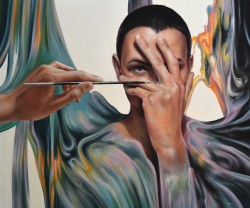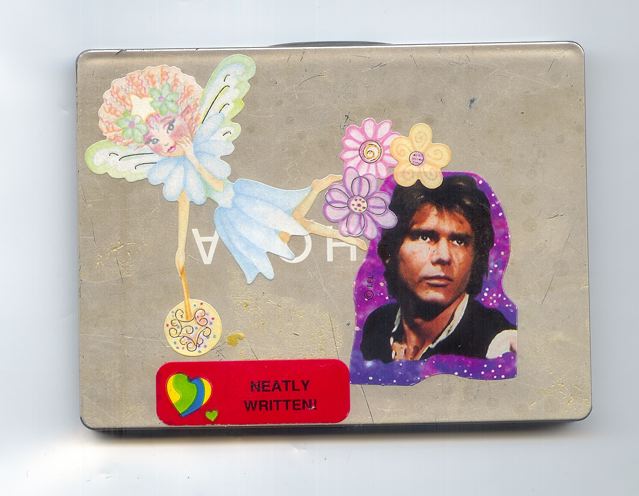I used to lie awake, staring at the ceiling, out the window or at my life-sized poster of Han Solo, wishing I had spoken up.
Or, maybe wishing that I hadn’t. I would go over all of the things in my head that I could have said instead of standing silent. On edge, my muscles would twitch, and I couldn’t stop checking the clock.
Those dark early hours of the morning were always the most frustrating.
There was always someone at work I had a problem with. These people seemed to find me and cause such havoc in my professional life that it would spill over into my social and home life, causing me stress, anxiety and ultimately, a lack of sleep that led to all kinds of health problems.
On those sleepless nights I would try breathing exercises, legs up the wall, gradually relaxing all of my muscles, starting at my toes and working my way to the top of my head. Nothing ever worked.
I knew I was awake and it was all because I had not been prepared to handle the confrontation that was currently replaying in my mind over and over and over. I felt helpless and alone at night and frustrated and angry during the day.
It all changed when I went to art school. Yes, art school. Sure, I learned how to paint and throw clay, but the best and most powerful thing that I learned there was how to communicate and how to handle difficult communication.
Almost every day, I had the opportunity to hang something on the wall that I had put my heart and soul into and have a bunch of young people tear it apart. At first, this process was incredibly grueling. Initially, I would be defensive, telling myself that these fools just didn’t understand my particular brand of genius. After a while however, I learned how to use that criticism to improve my art. After another while, I actually started to seek out this type of criticism.
 I also learned how to tell people difficult information. Initially, when I was the one doing the critiquing, I would end up making people cry. Part of me was defensive about this reaction, and the other part of me just felt bad. I would blurt out comments or even worse, not mention my feedback at all. It was a messy process, learning how to say something to a person so that they could hear it. I eventually got better at it though. After a while, people started seeking me out for my critical feedback.
I also learned how to tell people difficult information. Initially, when I was the one doing the critiquing, I would end up making people cry. Part of me was defensive about this reaction, and the other part of me just felt bad. I would blurt out comments or even worse, not mention my feedback at all. It was a messy process, learning how to say something to a person so that they could hear it. I eventually got better at it though. After a while, people started seeking me out for my critical feedback.
I also learned how to listen. I realized that my curiosity would serve me in this manner if I used it to ask better questions and then listen to the answers. I realized that making assumptions was the fastest way to kill my curiosity, and my curiosity was directly related to how much I could learn about a given person or topic.
After I left art school, my life improved. I had better relationships; I sought out critical feedback at work, and I let my curiosity guide me to great result. It was the strangest place and the strangest way to learn these skills, but I realized that the more I gave myself the opportunity to practice, the better and better I would eventually become, so I sought out opportunities to practice taking critical feedback, giving critical feedback, and listening with curiosity.
The more I actively and honestly engaged with the people around me, the more my life improved, and now, I rarely have a sleepless night. It is not something we are taught, how to communicate. We learn how, in most cases, subconsciously by watching our parents, teachers and other people we look up to. The reality is that in order to communicate effectively, the communication has to come from the individual, from where a person keeps her desires, fears and dreams.
Communication is a skill that is individual in nature; just as you can’t tell every person what the best diet for their body is, you also must leave room for the individual when it comes to communication style.
I have read lots of books on communication. I have been to communication trainings that I considered quite inspired, but the one thing they all missed was the practice element—the constant and vigilant practice that goes into perfecting communication for the individual. In order to be comfortable in uncomfortable situations, you must practice, just like an elite athlete, until effective communication is part of your genetic make-up.
It is much like clutch players; they perform flawlessly in highly stressful situations. In the last two seconds of the game, the ball is most often in their hands. They know they can depend on themselves to perform because they have done what they need to do thousands of times.
I see those stressful situations, when you have to tell someone something difficult, or you are in a position where you must handle difficult information, as clutch situations, and I practice for them by communicating as much as possible when the stakes aren’t as high.
Yes, it takes effort and focus, but I very rarely lose sleep over any of my interactions these days. That alone is worth the time I put into this. Though I have to say, I do miss that Han Solo poster quite a bit.
Love elephant and want to go steady?
Sign up for our (curated) daily and weekly newsletters!
Author: Sara Young
Editor: Travis May
Photo: Provided by Author









Read 0 comments and reply